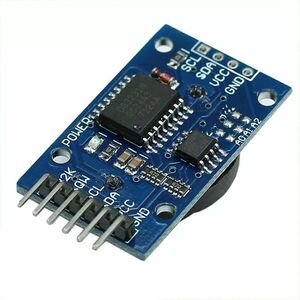DS3231 RTC: Difference between revisions
Jump to navigation
Jump to search
No edit summary |
No edit summary |
||
| Line 11: | Line 11: | ||
This 32Kbit (4096 x 8), will hold 4096 bytes of data. | This 32Kbit (4096 x 8), will hold 4096 bytes of data. | ||
NOTE! These modules typically have a battery | '''NOTE!''' | ||
These modules typically have a battery charging circuit to recharge a LIR2032, lithium coin cell. | |||
This can cause a problem if using CR2032, a cheaper non-rechargable coin cell. | |||
This page describes the problem: | |||
https://forum.arduino.cc/t/ds3231-cr2032-vs-lir2032-warning-is-your-module-killing-the-battery/557346 | |||
My preferred fix is to desolder the diode (or resistor), and lift one end from the board, thus | |||
breaking the charging circuit. This method allows the circuit to be restored easily in the future. | |||
Revision as of 16:00, 1 August 2024
The DS3231 RTC is a low cost, battery backup, Real Time Clock, that connects to an I2C bus, providing accurate time information.

Many DS3231 modules, like this one, https://www.ebay.com/itm/314250880191, have two I2C devices on-board, a DS3231 RTC and a AT24C32 EEPROM, allowing the storage of information into non-volatile memory. Documents: DS3231: https://www.analog.com/media/en/technical-documentation/data-sheets/ds3231.pdf The time (and temperature), are accessed via 19 byte-wide registers, see Address Map on page 11. AT24C32: https://ww1.microchip.com/downloads/en/devicedoc/doc0336.pdf This 32Kbit (4096 x 8), will hold 4096 bytes of data. NOTE! These modules typically have a battery charging circuit to recharge a LIR2032, lithium coin cell. This can cause a problem if using CR2032, a cheaper non-rechargable coin cell. This page describes the problem: https://forum.arduino.cc/t/ds3231-cr2032-vs-lir2032-warning-is-your-module-killing-the-battery/557346 My preferred fix is to desolder the diode (or resistor), and lift one end from the board, thus breaking the charging circuit. This method allows the circuit to be restored easily in the future.